A hard week's work

Caramor - sailing around the world
Franco Ferrero / Kath Mcnulty
Sun 21 Jan 2018 16:32
Since we arrived back in Valdivia last December, we have been cracking on steadily with all the little jobs necessary before crossing an ocean in a sailing yacht. Mostly it’s been going well. 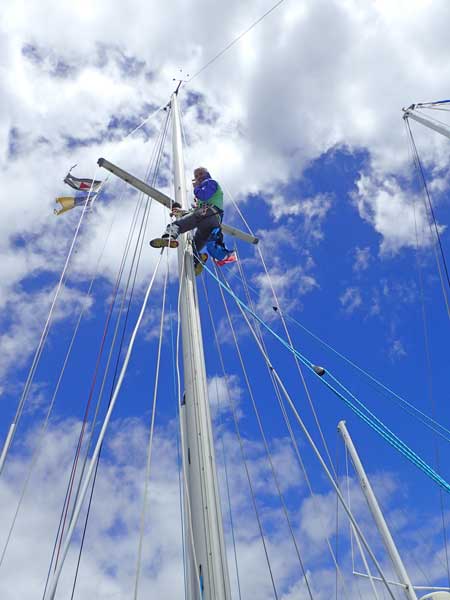 Franco checking the rigging up the mast 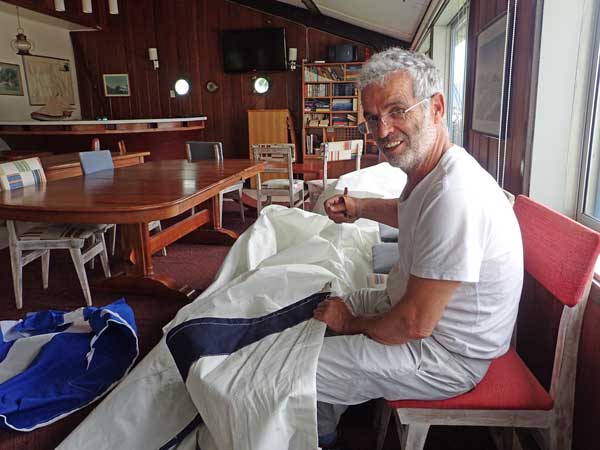 The sails needed a few repairs, most of the work was done on the machine but Franco put in the finishing touch the traditional way 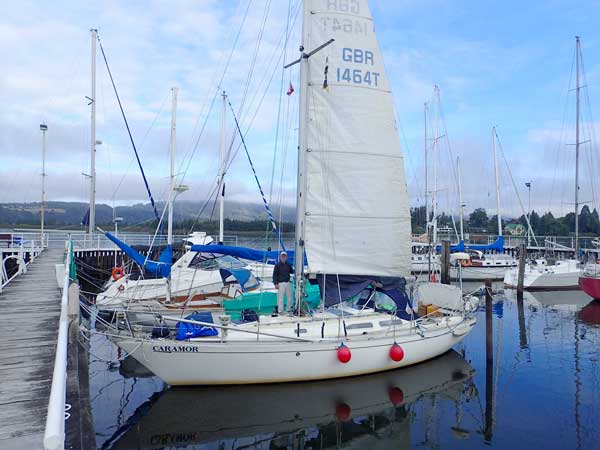 Bending the sails back on felt good, we made the most of the early morning calm Last Saturday evening we invited Stephen and Marja of yacht Motu (they are fellow Ocean Cruising Club members) over for dinner as they would soon be leaving Valdivia and no doubt it will be some time before we meet again. Sunday morning we started preparing Caramor for a spell out of the water. We would be hauling her out at evening high water around 11pm. At 6:30pm we were eating an early dinner when Lucho arrived. “Can you be ready in 20mins?” He asked. “Argh, 20mins? - Sure.” We answered. Just time for a quiet cup of tea, the last for six days.  Franco with Lucho, our good friend and the man responsible for hauling yachts out It took an hour longer to get going than Lucho’s 20 minutes because Caramor was aground and we had to wait for the tide to come in a little. German’s (prounounced Herman in Spanish) boat Capricornio was on the rails so he needed to launch first. We motored out of the marina to wait. Once Capricornio was back on the water, we headed for the rails and tied up between the stanchions, then Lucho winched the whole contraption out of the water. The process, although simple still took several hours. 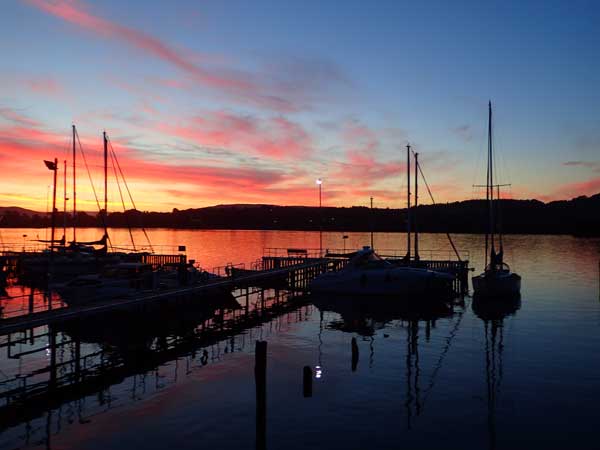 Capricornio returning to her berth at sunset 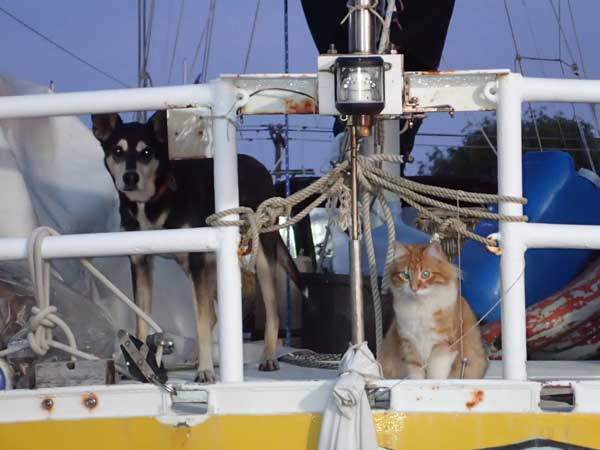 Poppy and Fish on Mollymawk checking we weren’t getting too close There were no nasty surprises. Cararmor’s hull was looking good and our beautiful propeller pristine. The sacrificial anode had worn which was excellent news, no electrolysis for us this time. (In Uruguay we had been surprised that our anode had practically not worn, until we realised that our propeller had worn instead and been destroyed by galvanic corrosion.*) We were keen to spend as little time out of the water as possible so got to work.  Anode after two years Day 1: Wash and sand hull, buy anti-fouling paint, clean and grease removable seacocks and inspect others, start work installing a new log, grease feathering propeller. Day 2: Paint two coats of antifouling (this is when we are really glad we have a relatively small boat). 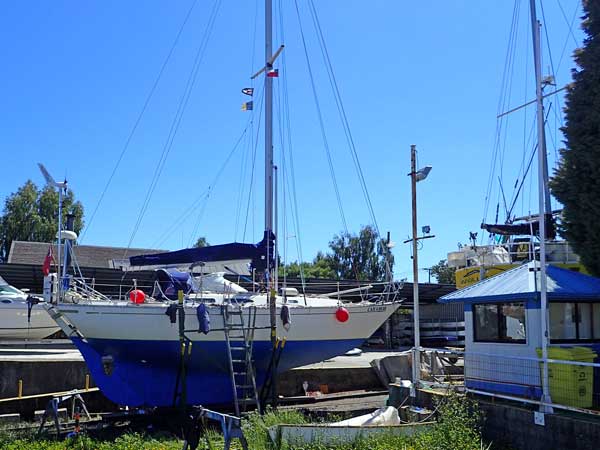 Caramor after her first coat of anti-fouling Day 3: Service the genoa furler, touch up the paintwork on our wooden rudder, and continue work on the new log. Launch Caramor at 1pm.  Kath polishing the propeller 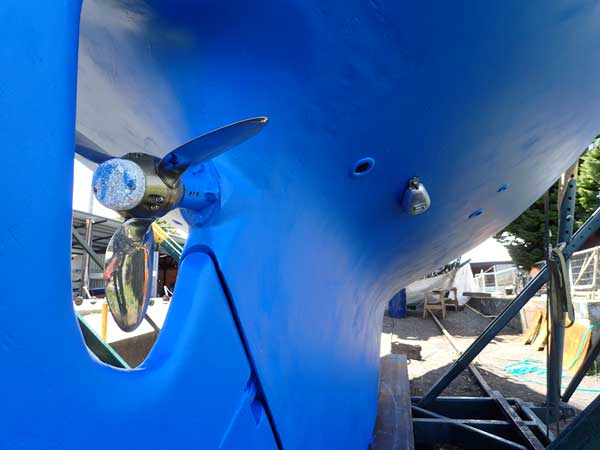 Caramor 2nd coat of paint and ready for the water Relaunching was straight forward as no other boats were ready to come out. Caramor is a wonderful ocean going ship but was never designed for tight turns in a marina (especially as the wind picked up just before we launched). Good old fashioned seamanship was the order of the day and we ‘warped her out’. We attached two long ropes to the end pontoons and pulled ourselves off the rails, then using a third rope, back into our berth. 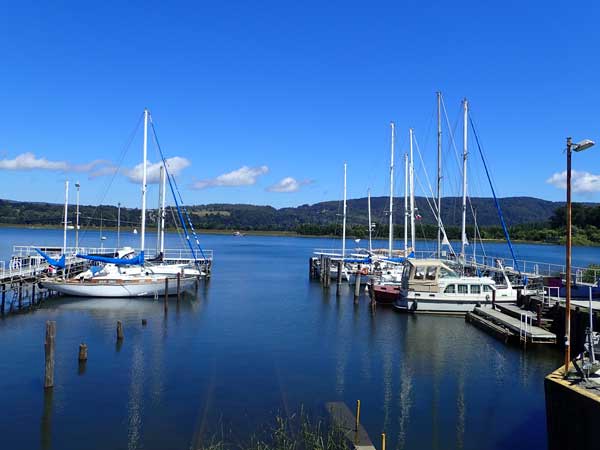 Valdivia yacht club before we launched No time to rest, it was payback time. German had very kindly sourced some good quality timber and arranged for his carpenter (who is working on his father’s wooden boat) to make us a replacement tiller for the one we broke on the way to South Georgia. (The lads in Grytviken had made us a replacement with bits of timber that were lying around but we wanted something better.) Sourcing the wood and someone with the skills would have been practically impossible for us here where all know-how is word of mouth. Last week German saw me using our sewing machine and his eyes lit up. Could we sew a UV strip onto his genoa? So I moved in to our improvised sail loft and Franco went back to the Pesda Press work. 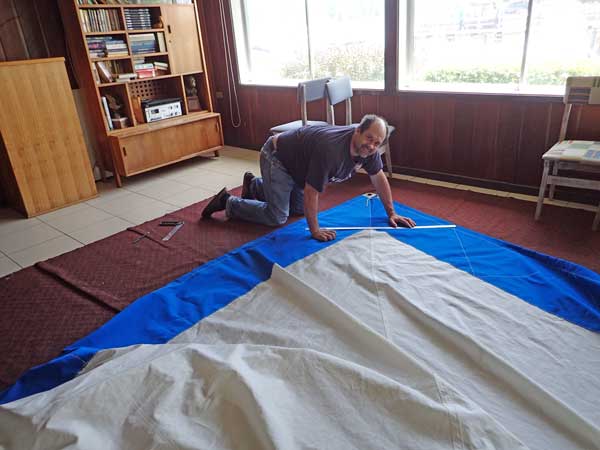 German measuring German had ordered the Sunbrella fabric from Santiago and the parcel with the new hot knife and sewing kit had at last arrived from the United States. We were in business. First there were a few sail repairs to make, then I needed to get the machine tension absolutely perfect and this took over an hour. But once the correct tension was achieved, we were on a roll. I hadn’t made a UV strip before so we had a bit of thinking to do. German was there the whole time and we worked well as a team. He did all the cutting and I stitched while he helped move the sail around to get the right sewing angle. The job was bigger than he had expected and took us two days though he was delighted with the finished product. He is planning to sail to Chiloe with his daughter Angela. 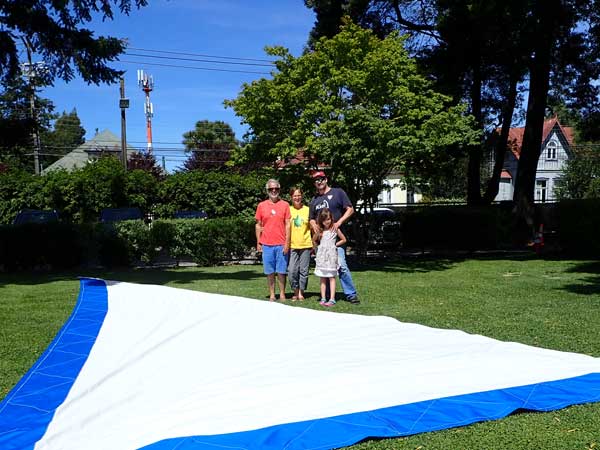 Finished UV strip with Franco, Kath, German and his daughter Angela Since the sewing machine was set up, Franco and I hauled our genoa down from the loft in the hangar and restitched the luff. My eyes were crossing by the end. It felt good to hoist it once again on Caramor. 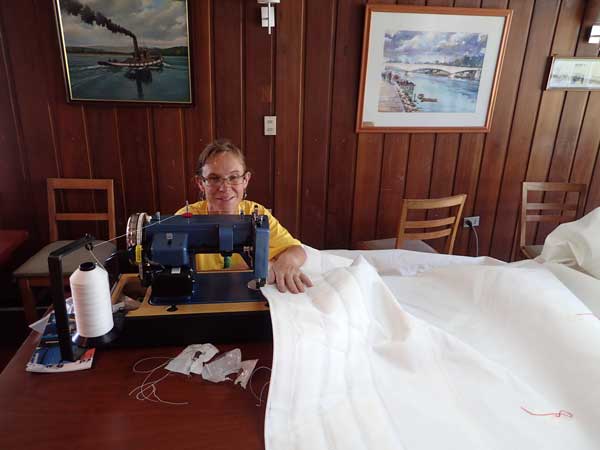 Kath - eyes crossing It was Friday night so we celebrated Franco’s birthday and our successful week with a seafood platter at our favourite café ‘Cosas Ricas’. 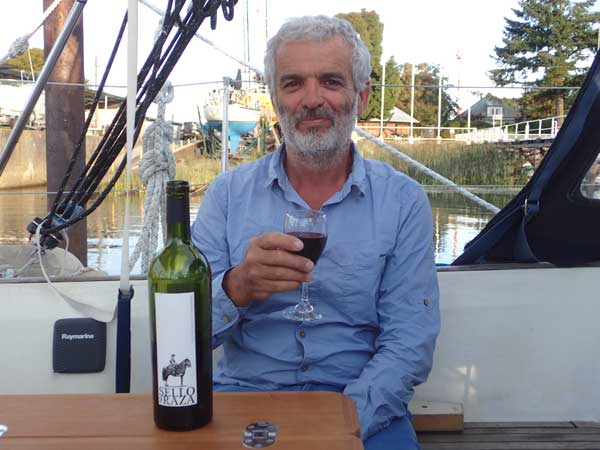 Franco enjoying a special birthday wine back on Caramor * Footnote: yandina.com provides a simple explanation of electrolysis: “Whenever different metals are placed in a conductive liquid (e.g. salt water) you create a battery. If you connect these pieces of metal together, current will flow. The current will be removing metal from one of the metal pieces. This process is called ‘electrolysis’. If this piece is the zinc sacrificial anode that is good, but if it is your propeller, it is bad. Zinc is used to make anodes because it has a higher voltage in the water so the current will be more inclined to flow from it than from your propeller. To complete the electrical circuit, the zincs must be connected to the items they are intended to protect. |